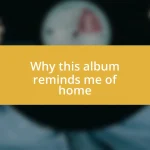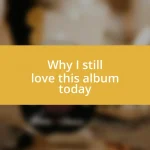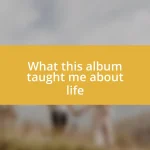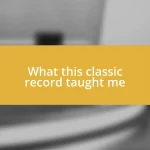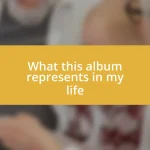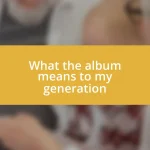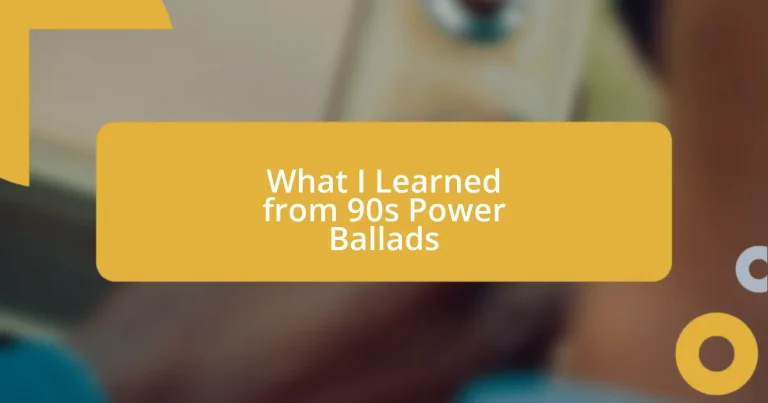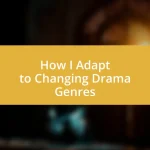Key takeaways:
- 90s power ballads capture intense emotions related to love, heartbreak, nostalgia, and vulnerability, resonating deeply with listeners.
- Key themes in the lyrics include heartbreak, longing, nostalgia, empowerment, and sacrifice, reflecting shared human experiences and emotional struggles.
- Musical elements like sweeping melodies and dynamic contrasts enhance emotional impact, encouraging self-reflection and the power of vulnerability in relationships.
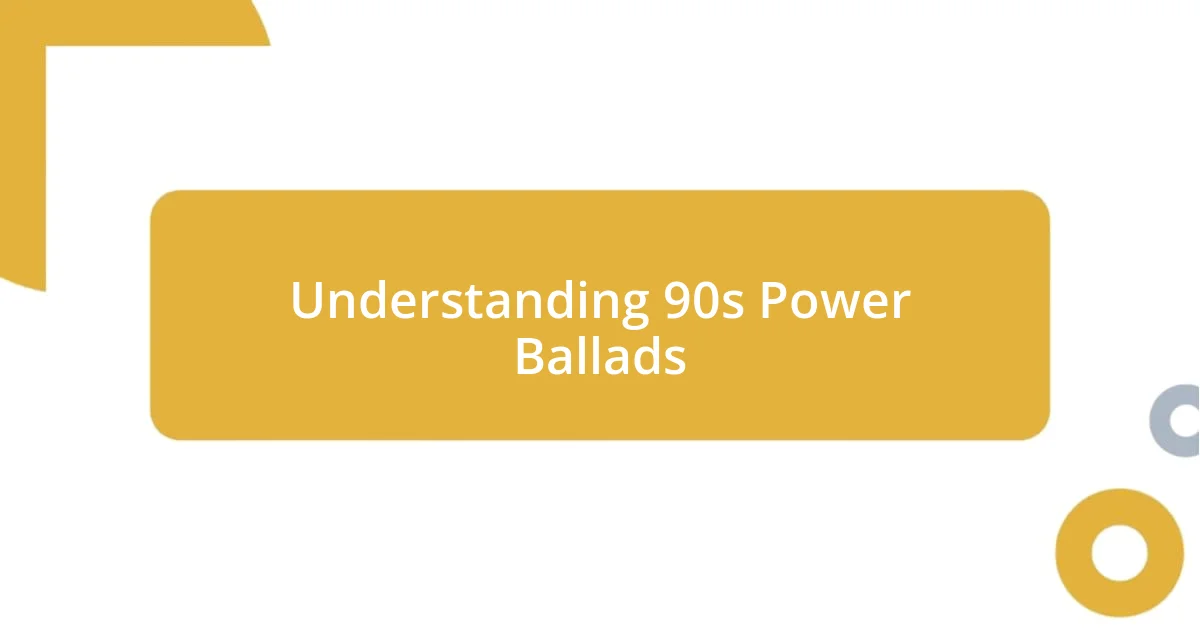
Understanding 90s Power Ballads
90s power ballads were more than just emotional songs; they were anthems that encapsulated the feelings of an entire generation. I remember blasting “November Rain” while staring out the window, feeling every note resonate deep within. How often do we find songs that articulate the turmoil of love and longing so perfectly?
From soaring vocals to heartfelt lyrics, these ballads often tackled themes of heartbreak and desire. I can still recall the first time I heard “I Don’t Want to Miss a Thing” by Aerosmith. I felt like the band was speaking directly to my heart, capturing the vulnerability I often grappled with in my own relationships. Isn’t it fascinating how a simple melody can evoke such powerful emotions?
Moreover, the instrumentation in 90s power ballads played a vital role in their impact. With lush arrangements and dramatic guitar solos, they elevated the emotional stakes of the lyrics. I often find myself reminiscing about driving late at night, the streetlights flashing past as “Always” by Bon Jovi filled the car. It felt like the soundtrack to my youthful dreams and heartaches, didn’t it?
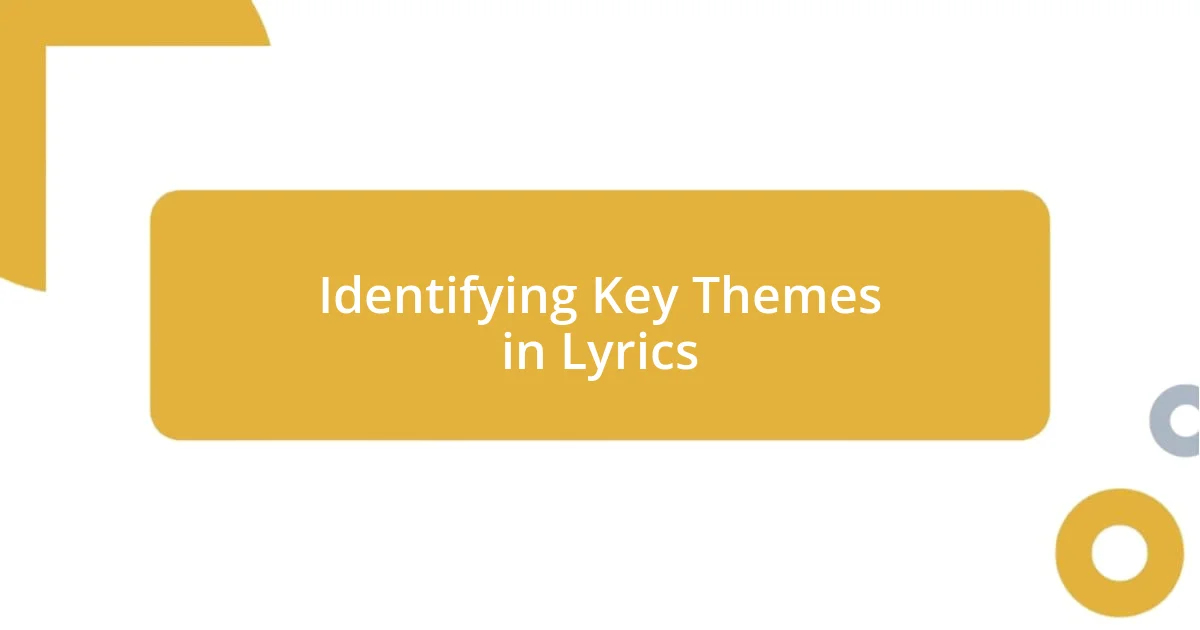
Identifying Key Themes in Lyrics
When diving into the lyrics of 90s power ballads, a few key themes stand out. Love is a predominant theme, often portrayed in its most dramatic forms. I remember blasting “I Will Always Love You” and being swept away by the intense feelings of devotion and sacrifice woven through every line. It’s remarkable how these songs not only express love but also the pain of its loss.
Key themes in 90s power ballad lyrics include:
- Heartbreak: The deep sorrow and longing after a relationship ends.
- Longing: A palpable yearning for connection, often explored through vivid imagery.
- Nostalgia: Reflecting on past love with a mix of fondness and regret.
- Empowerment: Overcoming struggles and emerging stronger, evoking a sense of resilience.
- Sacrifice: The theme of giving up for the sake of love, often illustrated through poignant metaphors.
Each theme encapsulates the emotional rollercoaster that many of us experienced. Listening to “Every Rose Has Its Thorn” reminds me of those late-night conversations with friends, reflecting on our struggles, and realizing we weren’t alone in feeling so deeply. It’s as if each ballad captures the essence of our shared human experience, reminding us that vulnerability can lead to incredible strength.

Emotional Connections in Power Ballads
It’s intriguing how 90s power ballads dive deep into the emotional recesses of our hearts. Every time I hear “Creep” by Radiohead, memories flood back of feeling out of place and battling my insecurities. That song encapsulates isolation and longing like few others. Can a simple guitar riff carry so much weight? In the hands of a skilled artist, absolutely.
The way these songs elicit a profound emotional response is nothing short of captivating. Take “Total Eclipse of the Heart,” for example. That intense crescendo and the desperate lyrics articulate feelings of despair and yearning in such a memorable way. Listening to it, I often find myself reliving those moments when my own heart ached, connecting every note to specific experiences in my life. It’s almost as if the artists were feeling my pain and transforming it into something beautiful.
Here’s something I’ve noticed: the harmony in these ballads isn’t just about the music; it’s the connection it creates between us and the artist. When I belt out “I Want to Know What Love Is” by Foreigner, it feels like I’m sharing my innermost thoughts with a chorus of strangers who feel the same way. In that moment, we’re all linked, experiencing the power of shared emotion together.
| Song Title | Key Emotional Themes |
|---|---|
| “Creep” by Radiohead | Isolation, Insecurity |
| “Total Eclipse of the Heart” by Bonnie Tyler | Despair, Longing |
| “I Want to Know What Love Is” by Foreigner | Desire, Vulnerability |

Musical Elements That Impact Us
The musical elements in 90s power ballads often intertwine with emotional resonance, creating an unforgettable atmosphere. Take, for instance, the use of sweeping melodies and heartfelt crescendos—they have a unique way of wrapping around your emotions. I can still remember the first time I heard “I Don’t Want to Miss a Thing” by Aerosmith; the rising chords made my heart race, as if the music itself was amplifying every sentiment of love and longing I had ever felt.
Instrumentation plays a significant role, too. The use of electric guitars paired with soft piano keys can evoke a sense of nostalgia and yearning. I’ve found that when I listen to “November Rain” by Guns N’ Roses, the orchestral arrangement makes the lyrics hit even harder. It’s something magical—how each note creates a vivid picture in my mind and encapsulates feelings of both loss and hope. Have you ever felt transported back to a moment in time just by hearing a specific chord?
The tempo shifts and dynamic contrasts throughout these songs keep us engaged and heighten the emotional experience. In “With Arms Wide Open” by Creed, the gradual build-up leads to a climactic release that feels almost cathartic. When I hear that song, I can’t help but reflect on my own journey into parenthood. It’s fascinating how such changes in musical elements can mirror the ebbs and flows of our lives, guiding us through memories we thought were long buried.

Applying Lessons from the Era
Applying lessons from the era reveals the power of vulnerability in connection. When I think back to belting out “Nothing Compares 2 U” by Sinead O’Connor, I remember feeling utterly exposed. That raw honesty ignited a realization: allowing ourselves to be vulnerable can enhance our relationships. Have you ever noticed that pouring your heart out can invite others to do the same?
The lyrics from those ballads often encouraged self-reflection. I distinctly recall the first time I heard “Because You Loved Me” by Celine Dion. It struck me how gratitude can become a powerful force in our lives. In those moments of reflection, I found inspiration to express appreciation to those who have supported me. Isn’t it remarkable how a song can push us to acknowledge the people who matter?
Let’s not forget the idea of resilience woven into these songs; it resonates deeply. After a tough breakup, I listened to “I Will Always Love You” by Whitney Houston on repeat. Each note reminded me that love can transcend loss. Can we emerge stronger by embracing our pain? I believe we can, and these ballads teach us to honor our emotions, paving the way for growth and healing.

Crafting Your Own Emotional Ballad
Crafting your emotional ballad starts with tapping into your own feelings. I remember sitting on my bedroom floor with my guitar, strumming simple chords while pouring out my heart after a tough day. That raw emotion fueled my creativity, transforming my pain into something tangible and beautiful. Have you tried turning your feelings into lyrics? It can be an incredibly liberating experience!
Next, think about the imagery you want to convey. When I was writing a piece inspired by a friend’s heartbreak, I used metaphors like “shattered glass” to symbolize vulnerability. This not only painted a vivid picture but also let listeners connect deeply with the sentiment. What visuals resonate with you? The right imagery can make your ballad memorable and relatable.
Finally, don’t shy away from experimenting with musical elements. The first time I incorporated a soft piano intro in my ballad, it completely changed the mood. The gentle tones set the stage for a powerful emotional release. Are you open to exploring different melodies and tempos? Remember, it’s about finding your unique voice and using it to share your story with authenticity.

